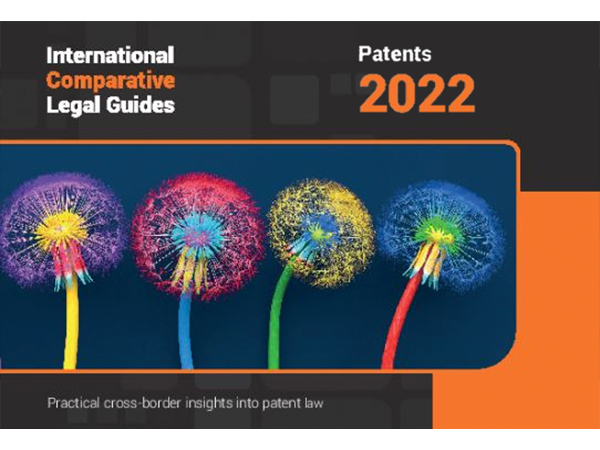
Intellectual Property
Viewpoints
Filter by:
FRAND Licensing of Global Portfolios – Who Gets to Set Worldwide Rates?
March 26, 2019 | Blog | By Michael Renaud, James Wodarski, Sandra Badin
A key issue in the licensing of standard essential patents (SEPs) is whether national courts have jurisdiction to determine what constitutes a global fair, reasonable, and non-discriminatory (FRAND) license rate. The Court of Appeal in England recently held that its patent courts have such jurisdiction. In Huawei Technologies Co. Ltd. v Conversant Wireless Licensing SARL, the Court of Appeal affirmed the jurisdiction of the High Court of Justice to try a claim for the infringement of UK-designated European SEPs against Chinese as well as English defendants and to issue an injunction for the unauthorized use of the SEPs at issue. In the process, it also affirmed the High Court’s jurisdiction to determine a worldwide FRAND rate.
Read more
PanOptis’ Recent Victory against Huawei Demonstrates Why an International Enforcement Approach Is Advisable for Standard-Essential Patents
March 21, 2019 | Blog | By Michael Renaud, James Wodarski, Matthew Galica
PanOptis Patent Management, LLC (“PanOptis”) was recently awarded enhanced damages and ongoing royalties as a result of Huawei Technology Co. Ltd. (“Huawei”) infringing five of its patents, four of which were alleged to be essential to the 4G LTE technology standard. Despite the successful legal outcome, the size of PanOptis’ cumulative damages award for its standard-essential patents was less than some observers anticipated. This result emphasizes the importance of taking a global enforcement approach—leveraging international fora—to recoup meaningful compensation for standard-essential patents.
Read more
Precedential PTAB Panel Says Petitioners Can Join Their Own Earlier-Filed IPRs and Join New Issues in Limited Circumstance
March 19, 2019 | Blog | By William Meunier, Brad M Scheller
In its first decision since its inception, the Precedential Opinion Panel (“POP”) for the U.S. Patent Trial and Appeal Board (“Board”), in Proppant Express Investments, LLC v. Oren Technologies, LLC, IPR2018-00914, held that under 35 U.S.C. § 315(c) the Board has discretion to allow a party, in limited circumstances, to join its own earlier-filed inter partes review (“IPR”) and join new issues, even if the party was otherwise time-barred under 35 U.S.C. § 315(b). Specifically, the Board may use this discretion only where fairness requires it and to avoid undue prejudice to a party. The POP nevertheless denied Proppant Express Investments LLC’s (“Petitioner”) motion for joinder as Petitioner’s motion was “a result of Petitioner’s errors,” and therefore did not fall within the limited circumstances it envisioned.
Read more
Cert. Denied – Patent Owners Still Must Prove Unpatented Features Did Not Drive Consumer Purchasing to Rely on EMVR
March 18, 2019 | Blog
On February 25, 2019, the Supreme Court denied Power Integrations, Inc.’s (“Power Integrations”) petition for writ of certiorari. The question presented to the Court was whether a plaintiff who had proven customer demand for an infringing product as a result of the patented feature was entitled to damages based on the entire market value of the product, or if the plaintiff also had to prove that the other unpatented features of the infringing product did not drive customer demand. The Court’s denial leaves a high burden for patentee’s relying on the Entire Market Value Rule (“EMVR”).
Read more
The FUCT Mark: Is the Prohibition on Scandalous Marks Unconstitutional?
March 14, 2019 | Blog | By Susan Neuberger Weller, Adam Samansky, Serge Subach
The constitutionality of yet another portion of Section 2(a) of the Lanham Act will soon be determined. Following in the footsteps of the blockbuster decision in Matal v. Tam, 137 S. Ct. 1744 (2017) (“Tam”), the U.S. Supreme Court granted certiorari to Iancu v. Brunetti on January 4, 2019. In Matal v. Tam, the Supreme Court held that the prohibition in Section 2(a) of the Lanham Act against registering disparaging trademarks at the U.S. Trademark Office (“USPTO”) was an unconstitutional restriction on free speech. However, Section 2(a) also prohibits the registration of other categories of marks, including marks that are immoral and scandalous. It is the constitutionality of this prohibition which is at issue in Brunetti.
Read more
Designing Around a Monopoly: the Public Interest Dispute between Qualcomm and Apple Takes a New Turn
March 12, 2019 | Blog | By Michael Renaud, James Wodarski, Sandra Badin, Matthew Galica
As we mentioned in December, the International Trade Commission issued a notice to review the Final Initial Determination and Recommended Determination issued by Administrative Law Judge Pender in Certain Mobile Electronic Devices and Radio Frequency and Process Components Thereof, 337-TA-1065 (“Certain Mobile Electronic Devices”), in which, despite finding that a valid patent was infringed and all jurisdictional requirements met, ALJ Pender had recommended that no exclusion order be issued against Apple because such an order would be contrary to the public interest.
Read more
U.S. Supreme Court Holds That Copyrights Must Be Registered before Plaintiffs Can File Infringement Suits
March 5, 2019 | Blog | By Susan Neuberger Weller, Andrew D. Skale
The U.S. Supreme Court held today that bringing a suit for copyright infringement requires that the infringed work actually be registered with the U.S. Copyright Office, and that a mere application for registration will not suffice.
Read more
The Tall Tale of the Domestic Industry
March 4, 2019 | Blog | By Michael Renaud, James Wodarski, Marguerite McConihe, Courtney Herndon
There is a common misconception the domestic industry economic prong requirement is insurmountable and an unknowable factor in a patent infringement action at the International Trade Commission (“ITC” or “Commission”), especially for foreign-based companies or non-practicing entities (“NPEs”). This could not be further from the truth. Those in the trenches at the ITC have seen recent trends that show with effective and strategic pre-suit diligence, creative thinking, and experienced counsel, the domestic industry requirement is no bar to a successful investigation.
Read more
Northern District of California Holds That Patent Suit Against Only Foreign Entities Is Permissible Even Where Inclusion of Domestic Entities Would Alter Venue Analysis
March 1, 2019 | Blog | By Andrew DeVoogd, Daniel Weinger, Matthew Galica
A recent order from the Northern District of California in AU Optronics Corporation America v. Vista Peak Ventures, LLC, 4:18-cv-04638 (CAND 2019-02-19) (“AU Optronics”), provides further guidance for patent venue analysis post-TC Heartland. Specifically, the order teaches that bringing a patent suit against only a foreign parent company while omitting its domestic subsidiary will likely not run afoul of TC Heartland’s seminal venue holding.
Read more
Continental Circuits LLC v. Intel Corp., et al: Federal Circuit Reemphasizes Prohibition on Importing a Preferred Embodiment into Patent Claims
February 20, 2019 | Blog | By Andrew DeVoogd, Matthew Galica
The Court of Appeals for the Federal Circuit (CAFC) recently issued a precedential opinion finding that a lower court had improperly incorporated an embodiment from the specification of the asserted patents into the claims. In its decision, the CAFC reaffirmed longstanding claim construction law: the claims of a patent are interpreted in light of a specification, but not everything expressed in the specification must be read into all of the claims.
Read more
Time-Barred IPR Petitioners Have Separate Standing to Appeal PTAB Decisions
February 12, 2019 | Blog | By John Bauer
In the February 1, 2019 decision of Mylan Pharms. Inc. v. Research Corp. Techs., 2019 U.S. App. LEXIS 3282, __ F.3d __, 2019 WL 405682, the Federal Circuit affirmed a PTAB final written decision (FWD) holding claims of U.S. Reissue Patent 38,551 not unpatentable. The Federal Circuit also held that time-barred petitioners who participated in an IPR as a result of joinder have standing to appeal. In finding such standing, the Federal Circuit analyzed the interplay between 35 U.S.C. §§ 315(b), 315(c), and 319.
Read more
Federal Circuit Dismisses Appeal of IPR Final Written Decision for Lack of Standing After Appellant Terminated Development of Potentially Infringing Pharmaceutical Product
February 11, 2019 | Blog | By Adam Samansky, Peter Cuomo, Joe Rutkowski
On February 7, 2019, the United States Court of Appeals for the Federal Circuit, in Momenta Pharmaceuticals v. Bristol-Myers Squibb, No. 2017-1694, dismissed Momenta’s appeal of a Final Written Decision in an Inter Partes Review (“IPR”) because Momenta had terminated its potentially infringing drug development program. According to the panel, this left Momenta without a sufficiently concrete interest in the action to satisfy the standing requirements of Article III of the United States Constitution.
Read more
PTAB Finds that Allowing IPR Petitioner to Avoid a Statutory Bar by Retroactively Adding Missing Real Party in Interest Is “In the Interest of Justice”
February 8, 2019 | Blog | By William Meunier, Daniel Weinger, Courtney Herndon
Recently, in ZTE (USA) Inc. v. Fundamental Innovation Int’l LLC, IPR2018-00425, Paper No. 34 (Feb. 6, 2019), the Patent Trial and Appeal Board (“PTAB”) allowed Petitioner’s motion to retroactively correct its defective IPR petition to identify a previously undisclosed real party in interest and thereby avoid a mandatory statutory bar.
Read more
Patent Term Adjustment: The Real Meaning of Applicant Delay
February 6, 2019 | Blog | By Christina Sperry, Elissa Kingsland
On January 23, 2019, the Federal Circuit decided Supernus Pharmaceuticals, Inc. vs. Iancu and shed light on Patent Term Adjustment (PTA). PTA was established by the American Inventors Protection Act of 1999 and codified at 35 U.S.C. § 154(b), which defines three kinds of United States Patent and Trademark Office (USPTO) delays, “A” delay, “B” delay, and “C” delay, and sets forth certain reductions from the summation of the Type A, B, and C delays. One of these reductions relates to Applicant delays. For an overview of PTA, see our prior articles here and here.
Read more
Year in Review: The Most Popular Blog Posts of 2018
January 30, 2019 | Blog | By Christina Sperry
As 2019 begins and intellectual property (IP) strategies are being developed for the new year, it is a good time to reflect on what IP issues were prominent in 2018. According to many readers, hot topics included handling IDSs and obviousness during U.S. patent prosecution, blockchain, PTAB rules, and subject matter eligibility under Section 101.
Read more
Key Strategies for Obtaining Patents Under the EPO’s New AI Guidelines
January 23, 2019 | Advisory | By Michael Renaud, Ralph Nack, Marguerite McConihe
Read about patenting strategies for the European Patent Office’s new artificial intelligence and machine learning guidelines and European Patent Convention requirements.
Read more
Supreme Court Holds AIA Did Not Alter the Settled Meaning of “On Sale”
January 22, 2019 | Blog | By Brad M Scheller, Peter Snell
Today the United States Supreme Court unanimously affirmed the Federal Circuit and held that it remains the law under the America Invents Act (AIA) that a confidential sale to a third party can trigger the “on sale” bar to patentability.
Read more
Significant 2018 Trademark Decisions
January 9, 2019 | Blog | By Michael Graif
This year the Supreme Court, United States Court of Appeals for the Federal Circuit, and the Circuit Courts penned a number of opinions impacting trademark law. Here are some key takeaways from the past year:
Read more
Written Description in Amgen v. Sanofi: Is the Federal Circuit Possessed? Will SCOTUS Grant Certiorari?
January 2, 2019 | Blog | By John Bauer
In the continuing Amgen v. Sanofi saga, Amgen has asked SCOTUS to take up the issue of written description, which is currently established by showing “whether the disclosure…reasonably conveys…that the inventor had possession of the claimed subject matter as of the filing date.” Ariad Pharms., Inc. v. Eli Lilly & Co., 598 F.3d 1336, 1351 (Fed. Cir. 2010)(en banc)(emphasis added).
Read more
Double Check Your Filings, A Cautionary Tale at the PTAB
January 2, 2019 | Blog | By John Bauer, Courtney Herndon
Recently in Nuna Baby Essentials, Inc. v. Britax Child Safety, Inc., IPR2018-01683, Paper No. 11 (PTAB Dec. 18, 2018), the Patent Trial and Appeal Board (“Board”) denied Petitioner’s motion to excuse the late filing of exhibits to the Petition, finding that Petitioner failed to establish good cause for such late filing or that consideration of the late-filed exhibits would be in the interests of justice.
Read more
Explore Other Viewpoints:
- Antitrust
- Appellate
- Arbitration, Mediation & Alternate Dispute Resolution
- Artificial Intelligence
- Awards
- Bankruptcy & Restructuring
- California Land Use
- Class Action
- Complex Commercial Litigation
- Construction
- Consumer Product Safety
- Cross-Border Asset Recovery
- Debt Financing
- Direct Investing (M&A)
- Diversity
- EB-5 Financing
- Education & Nonprofits
- Employment
- Energy & Sustainability
- Environmental Enforcement Defense
- Environmental Law
- FDA Regulatory
- Federal Circuit Appeals
- Financial Institution Litigation
- Government Law
- Growth Equity
- Health Care
- Health Care Compliance, Fraud and Abuse, & Regulatory Counseling
- Health Care Enforcement & Investigations
- Health Care Transactions
- Health Information Privacy & Security
- IP Due Diligence
- IPRs & Other Post Grant Proceedings
- Immigration
- Insolvency & Creditor Rights Litigation
- Institutional Investor Class Action Recovery
- Insurance & Financial Services
- Insurance Consulting & Risk Management
- Insurance and Reinsurance Problem-Solving & Dispute Resolution
- Intellectual Property
- Investment Funds
- Israel
- Licensing & Technology Transactions
- Life Sciences
- Litigation & Investigations
- M&A Litigation
- ML Strategies
- Medicare, Medicaid and Commercial Coverage & Reimbursement
- Mergers & Acquisitions
- Patent Litigation
- Patent Prosecution & Strategic Counseling
- Pharmacy Benefits and PBM Contracting
- Portfolio Companies
- Privacy & Cybersecurity
- Private Client
- Private Equity
- Pro Bono
- Products Liability & Complex Tort
- Projects & Infrastructure
- Public Finance
- Real Estate Litigation
- Real Estate Transactions
- Real Estate, Construction & Infrastructure
- Retail & Consumer Products
- Securities & Capital Markets
- Securities Litigation
- Special Purpose Acquisition Company (SPACs)
- Sports & Entertainment
- Strategic IP Monetization & Licensing
- Tax
- Technology
- Technology, Communications & Media
- Technology, Communications & Media Litigation
- Trade Secrets
- Trademark & Copyright
- Trademark Litigation
- Venture Capital & Emerging Companies
- White Collar Defense & Government Investigations
- Women's Health and Technology




